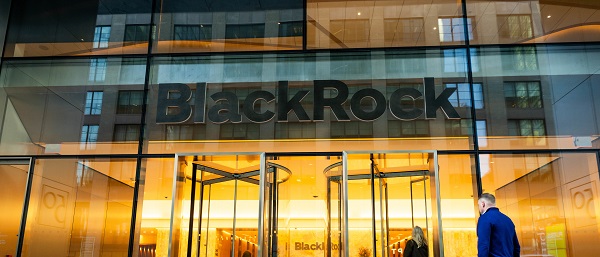Automotive
Energy Notes From the Edge: EV Industry on Limp-Home Mode; Greenpeace’s Firehose Used Against Them and They’re Not Happy
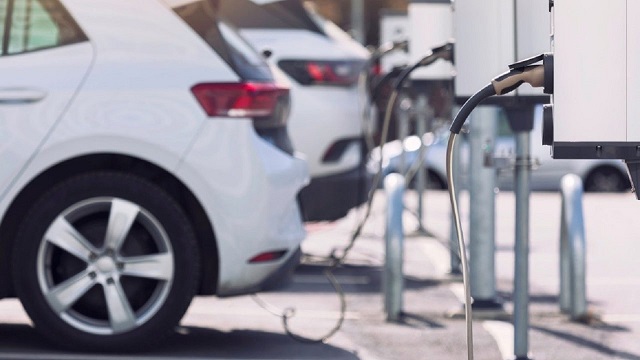
From the Frontier Centre for Public Policy
By Terry Etam
Consumers have spoken, auto makers are responding, and the odd man out are governments still paralyzed in 2019 when euphoric and nonsensical “environmental” policy danced on the supposed grave of last century’s fuel.
Summer was pretty quiet, thankfully, but time for a jolt to get reengaged. There’s no better way than getting yelled at, so today let’s talk about a surefire recipe – Electric Vehicles. Those that love EVs really love ‘em, and to speak ill of them in front of the fans is akin to asking questions about the size of their children’s ears.
EVs have an outsized role in the current cultural and economic landscape, in an odd way. They are seen as the best hope to turn the tide of general consumer emissions. Governments threw their full weight behind them to an astonishing degree, legislating them into projected dominance at an unprecedented (and as it turns out, insane) pace.
What makes EVs such a flashpoint is that they intersect with a bunch of stuff that people hold dear. For some, EV ownership feels like a major personal contribution to the global emissions problem, if owning one entails a significant personal commitment. For many, EVs make total sense if only running around town, or if wealthy enough to keep one in the garage amongst the Astons and Ferraris so as to be well-positioned to make an environmental statement if required. Some love them for their simplicity, with few moving parts and lower maintenance requirements (lower, but not zero). Still others love them because they can fuel up at home, at night. And then there is the cohort that feels their rage against oil companies sated cathartically every time they drive past a gas station, those that believe hydrocarbons bring nothing but death, irrespective of the fact that to that point in their life they’ve brought them everything within their purview, including all the things that keep them alive. Have pity on those people, the neutron-level boxing matches going on between their ears are not to be wished on anyone.
On the flip side of the equation, and what brings it to the news, is the public’s general feeling of “meh” towards them, the 80 percent that constitutes the non-extreme middle. In sane times, that is not a problem; major change happens gradually for such big ticket items, and most get a sense that certain segments of the economy work extremely well as EVs – delivery fleet vehicles, forklifts, urban taxis, etc. Many would drift toward EVs as battery technology improves, as range increases, as price falls. But such a shift would be a multi-generational thing, particularly with the infrastructure changes required.
Most consumers can see that that Total And Rapid EV Domination is not a particularly wise vision, even if governments have declared that that must happen within their dog’s lifespan.
Consumers do know a good idea when they see one, and we can see that by the explosion in popularity of hybrid vehicles – those with internal combustion engines augmented by modest battery packs and electric motors that give a certain emissions-free range before switching to gasoline power.
There’s a reason for this growing popularity – it makes sense on many levels. A hybrid removes some of the major reasons people are reluctant to go full-battery EV (BEV) – range anxiety, cold weather performance, etc. – and, as Toyota has wisely pointed out, hybrids are actually better for the environment in general than mass consumer adoption of EVs.
How can that be, you might wonder. Here is Toyota’s calculation, in what they call the 1:6:90 rule. An excellent write up can be found here, and the gist of it is: Because of immense challenges in finding, developing, mining, and processing critical metals and minerals (hundreds of new mines required globally, with each new mine having weaker grades than before, and with many jurisdictions becoming more hostile towards new mines), it makes more sense to utilize a given BEV’s minerals requirements to construct 90 hybrids instead.
Because many trips are very short, a hybrid can run on electric power for most of them, which is how the spreading-out of these minerals to many vehicles makes emissions reduction sense. Toyota calculates that if the metals/minerals used to construct a single EV were instead used to build 90 hybrids, the overall carbon reduction from those hybrids over their lifetimes would be 37 times that of a single EV (and with that sentence, I don my helmet for the incoming shouts of “Fossil Fuel Shill” – the aforementioned yelling).
Customers are clamouring to acquire hybrids. According to a Car Dealership Guy article (excellent auto news site, from a dealer perspective), in August, 48 percent of Toyota sales were hybrids, Hyundai had an 81 percent increase in hybrids (albeit from a relatively smaller number than Toyota), and Ford saw hybrid sales increase by 50 percent.
Volvo, a company that had pledged to be completely EV by 2030 and thereby banishing the smell of gasoline forevermore from customers’ nostrils, recently backed down from that pledge to announced hybrids would remain part of the equation indefinitely. “Everybody made a lot of assumptions two, three, four, five years ago, and that’s changed,” said Volvo’s CEO.
And then there is the Chinese onslaught of affordable, high-quality EVs that somehow policy planners didn’t see coming. Western countries announced bans on ICE in favour of full-EV by the next decade, and lo and behold, China controls most elements of an EV’s composition, and they took full advantage of that supply chain dominance (plus massive government support) to undercut virtually every western EV maker. Hey, you can’t do that, said US, Canadian, and EU governments, slapping huge tariffs on Chinese made EVs because well, we want to save the environment but not that badly (ultra cheap EVs are one of the few catalysts that would accelerate wide spread and rapid EV adoption among the masses).
Not sure where this goes next. Consumers have spoken, auto makers are responding, and the odd man out are governments still paralyzed in 2019 when euphoric and nonsensical “environmental” policy danced on the supposed grave of last century’s fuel. How they backpedal out of this is anyone’s guess, although there are signs, such as this headline: “Italy leads revolt against Europe’s electrical vehicle transition”. If memory serves from Italian traffic, they seem fine with virtually any sort of vehicular madness, so a automotive revolt in that land is a pretty big deal.
As with so, so many aspects of an energy transition, if the whole process had not been hijacked by zealots, we would be farther down the road, we would have consumers on side, we would have entire industries functioning properly instead of the fiascos we in for example the auto industry, and we most likely would have far less emissions.
Greenpeace USA on the ropes
In the big scheme of things, seeing something that has the words “green” and “peace” in the name fail would be disheartening; no sane person is against either the environment or peace. But put those two words together and you have something else entirely.
In the US, Greenpeace is for once holding the crappy end of the stick that they are used to jabbing at everything they disagree with. US energy pipeline giant Energy Transfer is seeking $300 million in damages for Greenpeace’s role in delaying the Dakota Access Pipeline. An ET victory would and should send shockwaves through the massively well financed protest industry that so far employs every tactic in the book to achieve victory (and by ‘victory’ we generally means ‘obstruction’ or ‘vengeance’ as opposed to any sort of constructive advancement). The big ENGOs spend hundreds of millions on staff and lawyers who literally have nothing to do other than bend society to their will without the bothersome hassle of going through the democratic process. Robert Bryce’s excellent Substack column keeps track of the staggering sums that US ENGOs churn through; Greenpeace US is a pipsqueak ($33 million annual engorgement) compared to locust-lawyer Natural Resources Defense Council’s staggering $548 million. With all that money, these groups construct nothing.)
It is a surprise there haven’t been more of these lawsuits filed by thwarted companies and hydrocarbon producers dragged into court for the sin of providing the fuel that keeps us all alive. It’s really not a hard argument to make; the world as we know it will collapse without hydrocarbon production, so shouldn’t thwarting that production on sometimes very flimsy grounds count for something? Shouldn’t blocking fuel from consumers that desperately need it (countless pipeline battles) count for something?
Greenpeace’s defence is pretty funny; suddenly they are insignificant, claiming to have had only a supporting role in the protests, and that the lawsuit is, the funniest part, an “attack on free speech.” Chaining one’s self (or worse, sending some naive acolyte to chain their selves) to a bulldozer on a construction site is, apparently, ‘free speech’, as is law fare and endless slanderous comments about the people and businesses that bring them the fuel that keeps their unhappy lives going.
Maybe the resurrected body, of which you can be certain will appear if this one is bankrupted, should start off with a bit of soul searching. Maybe peace means everyone working together for a common goal, not dramatizing a villain as the means of motivating the troops. Maybe ‘green’ should mean concern for habitat, concern for air pollution, concern for more intelligent use of resources, concern for the most logical global approach to progress, as opposed to a singular war against the bedrock of our society that it is glaringly obvious we cannot and will not live without.
First published here.
Terry Etam is a columnist with the BOE Report, a leading energy industry newsletter based in Calgary. He is the author of The End of Fossil Fuel Insanity. You can watch his Policy on the Frontier session from May 5, 2022 here.
Automotive
New federal government should pull the plug on Canada’s EV revolution

From the Fraser Institute
During his victory speech Monday night, Prime Minister Mark Carney repeated one of his favourite campaign slogans and vowed to make Canada a “clean energy superpower.” So, Canadians can expect Ottawa to “invest” more taxpayer money in “clean energy” projects including electric vehicles (EVs), the revolutionary transportation technology that’s been ready to replace internal combustion since 1901 yet still requires government subsidies.
It’s a good time for a little historical review. In 2012 south of the border, the Obama administration poured massive subsidies into companies peddling green tech, only to see a vast swath go belly up including Solyndra, would-be maker of advanced solar panels, which failed so spectacularly CNN called the company the “poster child for well-meaning government policy gone bad.”
One might think that such a spectacular failure might have served as a cautionary tale for today’s politicians. But one would be wrong. Even as the EV transition slammed into stiff headwinds, the Trudeau government and Ontario’s Ford government poured $5 billion in subsidies into Honda to build an EV battery plant and manufacture EVs in Ontario. That “investment” came on top of a long list of other “investments” including $15 billion for Stellantis and LG Energy Solution; $13 billion for Volkswagen (or $16.3 billion, per the Parliamentary Budget Officer), a combined $4.24 billion (federal/Quebec split) to Northvolt, a Swedish battery maker, and a combined $644 million (federal/Quebec split) to Ford Motor Company to build a cathode manufacturing plant in Quebec.
How’s all that working out? Not great.
“Projects announced for Canada’s EV supply chain are in various states of operation, and many remain years away from production,” notes automotive/natural resource reporter Gabriel Friedman, writing in the Financial Post. “Of the four multibillion-dollar battery cell manufacturing plants announced for Canada, only one—a joint venture known as NextStar Energy Inc. between South Korea’s LG Energy Solution Ltd. and European automaker Stellantis NV—progressed into even the construction phase.”
In 2023, Volkswagen said it would invest $7 billion by 2030 to build a battery cell manufacturing complex in St. Thomas, Ontario. However, Friedman notes “construction of the VW plant is not scheduled to begin until this spring [2025] and initial cell production will not begin for years.” Or ever, if Donald Trump’s pledge to end U.S. government support for a broad EV transition comes to pass.
In the meantime, other elements of Canada’s “clean tech” future are also in doubt. In December 2024, Saint-Jérome, Que.-based Lion Electric Co., which had received $100 million in provincial and government support to assemble batteries in Canada for electric school buses and trucks, said it would file for bankruptcy in the United States and creditor protection in Canada. And Ford Motor Company last summer scrapped its planned EV assembly plant in Oakville, Ontario—after $640 million in federal and provincial support.
And of course, there’s Canada’s own poster-child-of-clean-tech-subsidy failure, Northvolt. According to the CBC, the Swedish battery manufacturer, with plans to build a $7 billion factory in Quebec, has declared bankruptcy in Sweden, though Northvolt claims that its North American operations are “solvent.” That’s cold comfort to some Quebec policymakers: “We’re going to be losing hundreds of millions of dollars in a bet that our government in Quebec made on a poorly negotiated investment,” said Parti Québécois MNA Pascal Paradis.
Elections often bring about change. If the Carney government wants to change course and avoid more clean-tech calamities, it should pull the plug on the EV revolution and avoid any more electro-boondoggles.
Automotive
Major automakers push congress to block California’s 2035 EV mandate
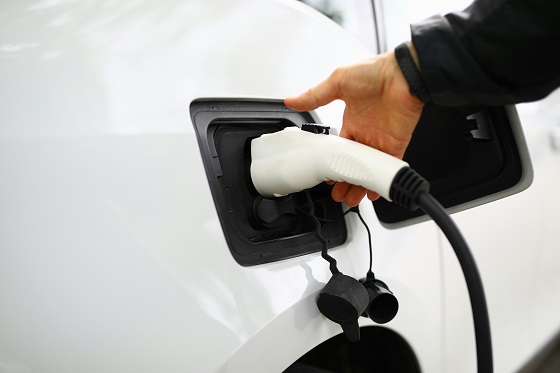
 MxM News
MxM News
Quick Hit:
Major automakers are urging Congress to intervene and halt California’s aggressive plan to eliminate gasoline-only vehicles by 2035. With the Biden-era EPA waiver empowering California and 11 other states to enforce the rule, automakers warn of immediate impacts on vehicle availability and consumer choice. The U.S. House is preparing for a critical vote to determine if California’s sweeping environmental mandates will stand.
Key Details:
-
Automakers argue California’s rules will raise prices and limit consumer choices, especially amid high tariffs on auto imports.
-
The House is set to vote this week on repealing the EPA waiver that greenlit California’s mandate.
-
California’s regulations would require 35% of 2026 model year vehicles to be zero-emission, a figure manufacturers say is unrealistic.
Diving Deeper:
The Alliance for Automotive Innovation, representing industry giants such as General Motors, Toyota, Volkswagen, and Hyundai, issued a letter Monday warning Congress about the looming consequences of California’s radical environmental regulations. The automakers stressed that unless Congress acts swiftly, vehicle shipments across the country could be disrupted within months, forcing car companies to artificially limit sales of traditional vehicles to meet electric vehicle quotas.
California’s Air Resources Board rules have already spread to 11 other states—including New York, Massachusetts, and Oregon—together representing roughly 40% of the entire U.S. auto market. Despite repeated concerns from manufacturers, California officials have doubled down, insisting that their measures are essential for meeting lofty greenhouse gas reduction targets and combating smog. However, even some states like Maryland have recognized the impracticality of California’s timeline, opting to delay compliance.
A major legal hurdle complicates the path forward. The Government Accountability Office ruled in March that the EPA waiver issued under former President Joe Biden cannot be revoked under the Congressional Review Act, which requires only a simple Senate majority. This creates uncertainty over whether Congress can truly roll back California’s authority without more complex legislative action.
The House is also gearing up to tackle other elements of California’s environmental regime, including blocking the state from imposing stricter pollution standards on commercial trucks and halting its low-nitrogen oxide emissions regulations for heavy-duty vehicles. These moves reflect growing concerns that California’s progressive regulatory overreach is threatening national commerce and consumer choice.
Under California’s current rules, the state demands that 35% of light-duty vehicles for the 2026 model year be zero-emission, scaling up rapidly to 68% by 2030. Industry experts widely agree that these targets are disconnected from reality, given the current slow pace of electric vehicle adoption among the broader American public, particularly in rural and lower-income areas.
California first unveiled its plan in 2020, aiming to make at least 80% of new cars electric and the remainder plug-in hybrids by 2035. Now, under President Donald Trump’s leadership, the U.S. Transportation Department is working to undo the aggressive fuel economy regulations imposed during former President Joe Biden’s term, offering a much-needed course correction for an auto industry burdened by regulatory overreach.
As Congress debates, the larger question remains: Will America allow one state’s left-wing environmental ideology to dictate terms for the entire country’s auto industry?
-

 Business14 hours ago
Business14 hours agoCanada drops almost all retaliatory tariffs on U.S.
-

 Business21 hours ago
Business21 hours agoFrom Gregor Robertson to Sean Fraser to Steven Guilbeault, Mark Carney’s Team ‘As Bad A Start As It Can Get’
-
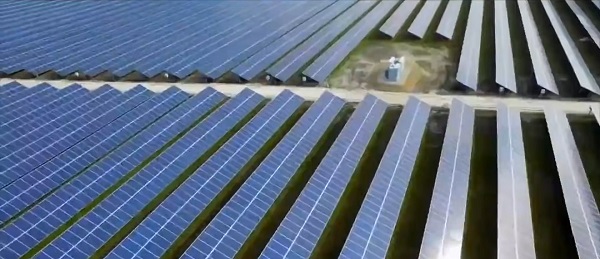
 Business1 day ago
Business1 day agoRogue Devices Capable Of Triggering Blackouts Reportedly Found In Chinese Solar Panels
-

 Business22 hours ago
Business22 hours agoCanada remains in neutral while the world moves at warp speed
-

 Health1 day ago
Health1 day agoMedical organizations and media let Canadians believe gender medicine is safe and universally accepted. It’s not
-
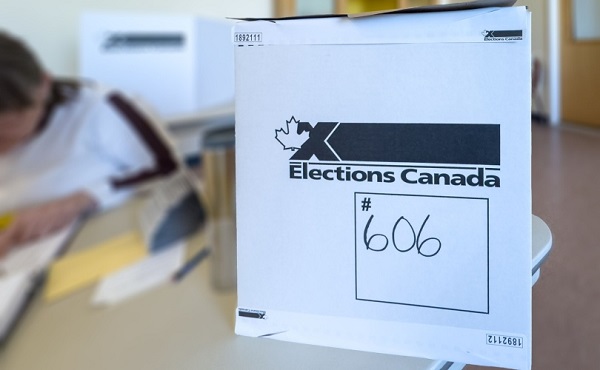
 2025 Federal Election2 days ago
2025 Federal Election2 days agoJudicial recounts could hand Mark Carney’s Liberals a near-majority government
-

 Business22 hours ago
Business22 hours agoCanadian airline WestJet ordered to compensate employee who refused the COVID jab
-

 Alberta2 days ago
Alberta2 days agoAlberta group releases referendum question on leaving Canada, becoming ‘sovereign country’

